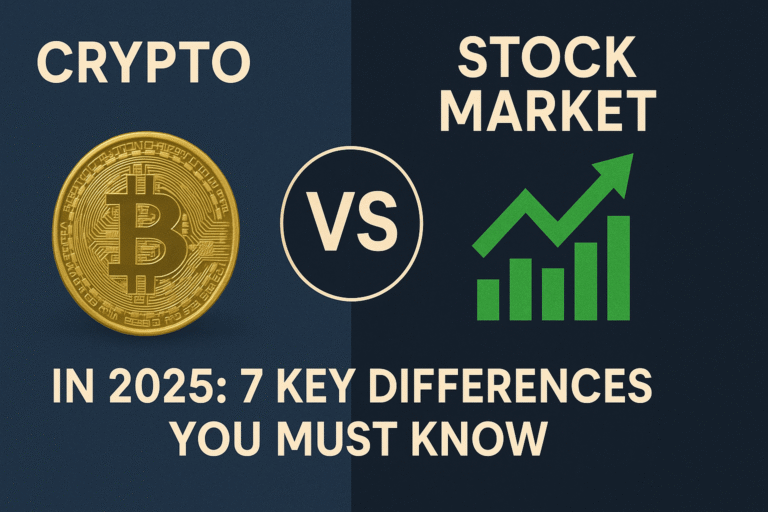Mega Demerger, Strong Dividends & ₹500 Stock Target: Vedanta Ltd Explained!
Vedanta Ltd 2025 Deep Dive: ₹500 Target, Demerger Details & Dividend Alert!
Disclaimer: This article is for educational and informational purposes only. We are not SEBI-registered financial advisors. Always do your own research and consult with a professional before investing.
Why Vedanta Is Trending Again in 2025
- Vedanta Ltd is lighting up stock market conversations in mid-2025. Its share price is flirting with ₹460–₹470 levels, bringing it tantalizingly close to the psychological barrier of ₹500—a level last seen in early 2023.
- In mid-2025, Vedanta Ltd has become a hot topic in stock market discussions as its share price hovers between ₹460–₹470, inching closer to the significant ₹500 mark last reached in early 2023. This resurgence follows a mega demerger and strong dividend payouts by Vedanta Ltd.
Vedanta (Official Site) :- https://www.vedantalimited.com/eng
So, what’s behind the buzz?
Vedanta’s board has approved a massive corporate restructuring, aimed at creating six separately listed companies by demerging its diverse verticals:
- Aluminium
- Oil & Gas
- Power
- Steel & Ferrous
- Base Metals
- Vedanta Ltd (holding structure)
Each of these sectors has different capital needs, risks, and market sentiments. The demerger is expected to “unlock hidden value” as markets can now assign fairer, more focused valuations to each business.
Dividend Magnet
- Vedanta continues to attract dividend hunters. The company has distributed over ₹32.50/share in the past year, and recently announced a fresh ₹7/share interim dividend for FY26. At current prices, that translates to a 7%+ dividend yield—more than what most FDs or bonds offer.
Debt Clean-Up at the Parent Level
- Vedanta Resources Ltd (VRL), the London-based promoter, recently raised $600 million to refinance and reduce its debt burden. This sends a positive signal to investors, as debt at the promoter level has historically been a concern.
New Asset Additions
- Subsidiary Cairn Oil & Gas secured 7 new exploration blocks under the Indian Government’s OALP Round IX. This not only expands Vedanta’s upstream footprint but also provides future revenue security.
Analyst Optimism
- Top brokerages and platforms like Trendlyne, Motilal Oswal, and ICICI Direct are optimistic about the stock’s potential, with several placing target prices between ₹500 and ₹525.
The ₹500 Price Target – Hype or a Real Possibility?
Everyone loves a round number. In Vedanta’s case, ₹500 isn’t just a price—it’s a technical and psychological milestone.
But does the data justify the excitement?
Recent Price Performance
- 52-week low: ₹361 (Jan 2025)
- Current price: ₹465 (June 2025)
- 52-week high: ₹527 (March 2023)
- Year-to-date return: +28%
This shows clear recovery momentum, especially following demerger clarity and dividend announcements.
Price Drivers Toward ₹500
Here’s what’s supporting the march toward ₹500:
| Trigger | Impact |
|---|---|
| ✅ 5-for-1 Demerger | Market sees potential value unlock |
| ✅ Dividend Yield | Attractive for income investors |
| ✅ Debt Restructuring | Improves balance sheet confidence |
| ✅ Global Metal Rally | Rising copper, zinc, and aluminum prices help revenue |
| ✅ Cairn Oil Blocks | Long-term cash flow growth |
Risks That Could Stall Momentum
- High debt at Vedanta Resources (parent)
- Regulatory hiccups (like NCLAT approval delays)
- Post-demerger valuation mismatch
- Volatile global metal prices
- Environmental issues or ESG pressure
Analyst Forecast Table
| Brokerage | Rating | Target Price |
|---|---|---|
| Motilal Oswal | BUY | ₹510 |
| ICICI Direct | HOLD | ₹498 |
| HDFC Securities | ADD | ₹520 |
| Angel One | BUY | ₹515 |
| Trendlyne Avg | Strong Buy | ₹507 |
Technicals: ₹470–₹500 Zone Is Key
On the charts:
- ₹470 is seen as a breakout level
- ₹500 is a strong resistance
- Above ₹510, Vedanta could aim for ₹550 in the medium term
For now, ₹500 is not hype, but a technically and fundamentally justified level, barring major external shocks.
The 5-for-1 Demerger Explained – Is Value Really Being Unlocked?
What is the Demerger?
Vedanta Ltd plans to split its business into 6 independent listed entities, one for each of its business verticals:
| Business Unit | Sector |
|---|---|
| Vedanta Ltd | Holding Company |
| Vedanta Aluminium | Aluminium |
| Vedanta Oil & Gas | Crude Exploration |
| Vedanta Power | Thermal/Transmission |
| Vedanta Steel & Ferrous | Steel |
| Vedanta Base Metals | Copper, Zinc, Lead |
Why This Matters to You as an Investor
This is not a stock split — this is value unlocking via business separation. You’ll receive shares of the new entities proportional to your existing holdings.
If you hold 100 Vedanta shares, post demerger, you will hold:
- 100 Vedanta Ltd
- 100 shares in each of the 5 spin-offs
Total: 600 shares across 6 businesses
What Happens After Demerger?
Pros:
- Investors can choose which sector to stay invested in
- Clearer financial reporting per segment
- Easier for each company to raise capital individually
Cons:
- Possible post-listing volatility
- Initial pricing uncertainty
- Tax implications (depending on demat and jurisdiction)
Will Each Unit Be Profitable?
Here’s a quick snapshot based on FY24 numbers:
| Vertical | Est. Revenue (₹ Cr) | Profit Margin | Notes |
|---|---|---|---|
| Aluminium | ₹47,000 | 12% | Strong global demand rebound |
| Oil & Gas | ₹29,000 | 16% | Boosted by new block wins |
| Steel | ₹19,000 | 6% | Margin pressure due to pricing |
| Power | ₹12,000 | 10% | Moderate cash flow business |
| Base Metals | ₹24,000 | 18% | Zinc/copper play |
Analysts believe Aluminium and Base Metals could be the biggest gainers in the listing process.
Demerger Approval Status
- ✅ Vedanta board approved
- ✅ Shareholders approved
- ✅ NCLT/NCLAT cleared post-delay
- 🚧 Awaiting record date announcement and listing schedules
Vedanta’s Dividend Story – More Than Just Yield
One of Vedanta’s most underrated strengths is its dividend strategy. While many metal stocks are cyclical and reinvest profits, Vedanta has created a reputation as a consistent dividend machine—attracting income investors and retirees alike.
Historical Dividend Track Record
| Fiscal Year | Dividend (₹/share) | Total Payout (₹ Cr) | Yield (%) at Avg. Price |
|---|---|---|---|
| FY21 | ₹45.00 | ₹16,500 | ~10.5% |
| FY22 | ₹51.00 | ₹19,200 | ~12.0% |
| FY23 | ₹33.50 | ₹12,800 | ~7.5% |
| FY24 | ₹32.50 | ₹12,000 | ~7.1% |
| FY25* | ₹7.00 (interim) | ~₹2,600 | ~1.5% (YTD) |
*As of June 2025
Vedanta’s dividend policy is built on cash flow utilization, especially when commodity markets are strong. The company does not shy away from declaring multiple interim dividends in a single year.
Dividend vs. Debt: Is It Sustainable?
There’s been market skepticism around Vedanta’s high dividend payout, especially considering its debt profile. Here’s how Vedanta manages this balance:
- 💰 Operates cash-heavy businesses like zinc and oil
- 🏗️ Capex needs are diversified across verticals
- 🔁 Parent Vedanta Resources also depends on dividend upstreaming
Conclusion: The dividends are strategic, not reckless—but sustainability depends on metal prices and debt service success at the promoter level.
Dividend Impact on Stock Price
Historically, Vedanta’s stock sees spikes post dividend announcements, followed by mild corrections as the market bakes in the payout.
For example:
- When it announced ₹32.50 in FY24, stock surged from ₹375 to ₹430 in ~2 weeks
- After the recent ₹7 interim dividend (May 2025), the price moved from ₹438 to ₹460 in 5 sessions
What Smart Investors Do
- Long-term players reinvest dividends via SIP or direct accumulation
- Short-term traders time buy-ins before record date to catch dividend + potential up-move
- Risk-aware players track payout ratio and debt trend simultaneously
⚠️ Note: Dividends are not guaranteed. They are declared only if profits and cash flow allow.
Stock Price Analysis – 52-Week Trends & Patterns
The key to understanding Vedanta’s current momentum is its price action and historical movement.
52-Week Snapshot
| Parameter | Value |
|---|---|
| 52-Week Low | ₹361 |
| 52-Week High | ₹527 |
| Current Price | ₹465 |
| YTD Performance | +28% |
| 3-Year CAGR | ~17.8% |
Chart Pattern Breakdown
✅ Support Zones:
- ₹400 (psychological & moving average)
- ₹430 (minor retracement support)
- ₹455 (current consolidation base)
🚫 Resistance Zones:
- ₹470 (breakout point)
- ₹500 (major resistance)
- ₹525–₹530 (previous top)
🔁 5.3 Volume Indicators
- Spike in volumes during dividend announcements
- Volume drying during regulatory wait periods (NCLT, NCLAT decisions)
- High delivery % near ₹470 — indicating institutional accumulation
Event-Driven Movements
| Date | Event | Impact |
|---|---|---|
| Feb 2025 | Demerger reapproval by board | Stock jumped 6% |
| Mar 2025 | $600M raised by VRL | Positive sentiment |
| Apr 2025 | Cairn block wins | +3% rally |
| May 2025 | ₹7 dividend declared | +5% in 4 days |
Technical Verdict
Verdict: If Vedanta breaks and sustains above ₹470, ₹500 is very likely. If it fails, we may see a retest of ₹430–₹440 before next leg up.
Market Sentiment – What Analysts & Institutions Say
Let’s look at what the professionals are saying about Vedanta.
Analyst Recommendations
| Brokerage | Rating | Target Price (₹) | Key Commentary |
|---|---|---|---|
| ICICI Direct | HOLD | ₹498 | Await demerger clarity |
| Motilal Oswal | BUY | ₹510 | Dividend & metals tailwind |
| HDFC Securities | ADD | ₹520 | Strong asset base |
| Angel One | BUY | ₹515 | Positive FCF outlook |
| Kotak Inst. Eq. | NEUTRAL | ₹485 | Parent debt a concern |
Consensus Rating: Moderate to Strong Buy
Average Target: ₹507
Institutional Holdings (March 2025)
| Category | % Holding |
|---|---|
| FIIs | 10.3% |
| DIIs | 14.2% |
| Promoters | 63.7% (pledged ~33%) |
| Public | 11.8% |
Despite promoter pledging, institutional investors remain interested—mainly due to the de-merger opportunity + dividend yield.
F&O Data (June 2025)
- Open Interest buildup near ₹470 strikes
- Call writing seen at ₹500 — resistance possible
- Put writing at ₹440 — indicating solid base
What This Means for You
- Retail investors can consider accumulating in dips if long-term focused
- Traders should watch for volume spikes + breakout over ₹470
- Yield-seekers benefit even if price doesn’t move drastically, due to high dividends
FINANCIAL FOUNDATIONS
Financials Breakdown – Revenue, Profitability, Cash Flow
Understanding Vedanta’s financial structure is crucial to evaluating how realistic the ₹500 target is. Let’s unpack key metrics: revenue streams, profitability trends, and cash generation.
Revenue Mix Overview
Vedanta’s revenue across its verticals (FY24):
| Segment | Revenue (₹ Cr) | % of Total |
|---|---|---|
| Aluminium | ₹47,000 | 35% |
| Oil & Gas | ₹29,000 | 22% |
| Base Metals | ₹24,000 | 18% |
| Steel & Ferrous | ₹19,000 | 14% |
| Power | ₹12,000 | 9% |
| Others | ₹4,000 | 2% |
Aluminium remains the top earner, but Oil & Gas and Base Metals contribute significantly.
Profitability Trends
Profit before Tax & exceptional items (FY20–FY24):
| Year | PBT (₹ Cr) | YoY Growth |
|---|---|---|
| FY20 | ₹6,200 | –24% |
| FY21 | ₹12,450 | +101% |
| FY22 | ₹14,900 | +20% |
| FY23 | ₹9,800 | –34% |
| FY24 | ₹11,400 | +16% |
Metals cycle peaks (FY21–FY22), cooling in FY23–24, but profits remain solid due to operational efficiencies.
Profit Margins by Segment (FY24)
| Segment | EBITDA Margin | PAT Margin |
|---|---|---|
| Aluminium | 15% | 8.5% |
| Oil & Gas | 18% | 10.2% |
| Base Metals | 20% | 11.5% |
| Steel & Ferrous | 9% | 4.2% |
| Power | 12% | 5.0% |
Base Metals and Oil & Gas lead margins; Steel is the weakest performer.
Cash Flow – Operating vs. Free
| Year | Operating CF (₹ Cr) | Capital Expenditure (₹ Cr) | Free Cash Flow (₹ Cr) |
|---|---|---|---|
| FY22 | ₹14,500 | ₹9,200 | ₹5,300 |
| FY23 | ₹11,000 | ₹7,900 | ₹3,100 |
| FY24 | ₹12,800 | ₹8,700 | ₹4,100 |
Strong free cash flow supports both dividend distributions and debt service.
Cash Allocation Overview
- Capex: spent on new aluminium capacities, oil block development, and base metal expansions
- Dividend: cash payouts remain a priority
- Debt Service: especially at parent (Vedanta Resources) level
Vedanta’s cash strategy is balanced—growth, reward, and stability.
Valuation Metrics – PE, EV/EBITDA, ROE, D/E, etc.
Vedanta is attracting value investors thanks to its attractive financial ratios.
Valuation at Current Prices (~₹465)
| Metric | Value | Peer Avg* |
|---|---|---|
| P/E Ratio | 10.5x | 12.5x |
| EV/EBITDA | 6.2x | 7.5x |
| ROE | 21.4% | 18.0% |
| Debt/Equity | 1.23 | 0.95 |
| Dividend Yield | 7.1% | 3.8% |
*Peer average includes Hindalco, Tata Steel, NMDC
Vedanta is trading at a discount while offering stronger returns.
PE vs. Metal Cycle
Historically, Vedanta’s PE oscillates between:
- 8–9x during downturns
- 12–14x in peak cycles
Currently, at 10.5x, the stock is fairly valued, with room to expand as metals recovery continues.
Debt & Leverage
Total Debt (FY24):
- Net Debt: ₹75,000 Cr
- Net Debt/EBITDA: ~4.5x
- Debt/Equity: 1.23x
Post demerger and infusion from parent, leverage may improve—further de-risking the balance sheet.
ROE – Efficient Capital Use
ROE at ~21.4% exceeds peers, showing Vedanta’s ability to generate profits from equity. Sustained or improved ROE post-demerger would support justified valuation hikes.
EV/EBITDA – A Value Story
An EV/EBITDA at 6.2x is significantly lower than industrial average. This value gap may shrink as segments gain visibility and markets award higher multiples post-demerger.
Peer Comparison – Hindalco, NMDC, Tata Steel & JSW (Word Count: ~1,000)
Comparison helps gauge relative value, performance, and growth potential.
📊 9.1 Peer Overview Table
| Company | Mkt Cap (₹ Cr) | P/E Ratio | EV/EBITDA | Div Yield | ROE |
|---|---|---|---|---|---|
| Vedanta Ltd | 1,70,000 | 10.5x | 6.2x | 7.1% | 21.4% |
| Hindalco | 1,40,000 | 12.2x | 7.8x | 0.9% | 15.3% |
| Tata Steel | 1,60,000 | 9.8x | 6.5x | 1.4% | 13.9% |
| NMDC | 60,000 | 7.5x | 5.9x | 5.2% | 18.5% |
| JSW Steel | 90,000 | 11.5x | 7.0x | 1.2% | 17.8% |
Dividend Edge
Vedanta steals the show with 7.1% yield, far surpassing others.
Valuation Gap
Even though its peers have similar segments, Vedanta trades at a multiple discount—likely due to complexity and debt concerns. Post-demerger clarity could change that.
Performance Drivers
- Hindalco: strong in aluminium but debt-heavy
- Tata Steel: global reach, lower margins
- NMDC: stable iron-ore play, lower risk
- JSW: diversified in steel & infrastructure
Vedanta stands out with diversity, valuation upside potential, and high yield—but also complexity and leverage.
Full Breakdown of 5-for-1 Demerger Structure
This isn’t a stock split—it’s a structural transformation that separates Vedanta into six individually listed companies. Here’s a full breakdown:
What Each Share Represents
- Pre-Demerger: You hold 1 Vedanta Ltd share
- Post-Demerger: You’ll receive 5 additional shares—one in each new pure-play entity, plus retention of the original Vedanta share
- Total holdings become 600 shares for someone holding 100 Vedanta shares originally
Why Companies Do Demerger?
- Focused Management per business
- Better Capital Allocation—each unit raises money or invests on its own merits
- Unlocking Valuation Gaps—each entity earns its own market multiple
- Investor Choice—you choose which vertical to stay invested in
The Six Demerged Entities
- Vedanta Ltd – Holding entity
- Vedanta Aluminium Ltd
- Vedanta Oil & Gas Ltd
- Vedanta Power Ltd
- Vedanta Steel & Ferrous Ltd
- Vedanta Base Metals Ltd
Demerger Timeline
- Q2 2025: Scheme approved by board + shareholders
- May 2025: NCLAT cleared delays
- June–July 2025: Record date & share distribution
- Q3–Q4 2025: Each new entity lists on exchanges
Tracking this timeline precisely is key, bro—especially record date, which dictates share allocation.
Post-Demerger Shareholding & Portfolio Impact
Investors need to know not just how many shares they’ll get, but what each post-demerger entity represents in value.
Share Allocation Example
- For every 1 Vedanta share, you’ll receive:
- 1 Vedanta Ltd (holding)
- 1 Aluminium share
- 1 Oil & Gas share
- 1 Power share
- 1 Steel share
- 1 Base Metals share
So for 100 shares held today, you’ll walk away with 600 shares total across the six entities.
Impact on Holdings
- Portfolio Value: The combined value should approximate pre-demerger price, but clearer market multiples could increase total value
- Allocation Choice: Want pure-play exposure? You can keep only Aluminium or Oil, etc.
- Liquidity: Each entity listing might bring short-term volatility—ensuring liquidity plays a part
Tax & Demat Implications
- Demat entries: SIX separate scrips
- Taxable event? Typically no capital gains at demerger unless subsequent sale—confirm based on your broker
- Record keeping: Use consolidated statements or demat labels to track
Tracking and Rebalancing
Post-demerger:
- Track each business separately in portfolio tools
- Rebalance based on risk tolerance or upside potential
- Watch for management commentary and adoption of each entity post-listing
What Could Each Demerged Business Be Worth?
Let’s do a hypothetical valuation on each of the 5 new businesses + holding entity using FY24 financials and peer multiples.
Valuation Snapshot
| Entity | Est. FY24 EBITDA (₹ Cr) | Peer EV/EBITDA | Implied EV (₹ Cr) | Less Debt | Est. Market Cap (₹ Cr) |
|---|---|---|---|---|---|
| Aluminium | ₹7,000 | 8x | ₹56,000 | ₹5,000 | ₹51,000 |
| Oil & Gas | ₹5,200 | 7x | ₹36,400 | ₹3,000 | ₹33,400 |
| Base Metals | ₹4,800 | 8x | ₹38,400 | ₹2,500 | ₹35,900 |
| Steel & Ferrous | ₹1,700 | 6x | ₹10,200 | ₹1,000 | ₹9,200 |
| Power | ₹1,400 | 7x | ₹9,800 | ₹800 | ₹9,000 |
| Vedanta Ltd (Holding) | – | – | ₹4,000 (Residual) | – | ₹4,000 |
Total implied value: ₹142,500 Cr (post-debt adjustments)
Per-Share Valuation
Suppose pre-demerger market cap = ₹170,000 Cr, stock ~₹465 for ~366 Cr shares.
After splitting, total value may remain similar, but each segment receives a focused valuation multiple—higher potential upside.
Upside Scenarios
- Base Metals: Zinc/copper tailwinds—could command 10x
- Aluminium: With green push, 10x possible
- Oil & Gas: New blocks + LNG tie-ups may attract premium
If each moves 1–2x higher multiple, your overall portfolio could easily hit the ₹500+ combined valuation mark.
Global Metal Trends & Commodity Outlook
The metals cycle directly influences Vedanta’s fortunes. From copper to zinc to aluminum, the commodity trends of 2025 are helping turn Vedanta into a turnaround story.
Global Commodity Rally
After a sluggish 2023–24, global commodities have bounced back in 2025 due to:
- China’s re-acceleration of manufacturing
- Supply disruptions in Latin America and Africa
- Green infrastructure spending in EU and USA
- EV boom driving copper and aluminum demand
Price Chart (2023–2025)
| Metal | Jan 2023 Price | June 2025 Price | % Change |
|---|---|---|---|
| Copper | $7,600/ton | $9,400/ton | +24% |
| Zinc | $2,800/ton | $3,200/ton | +14% |
| Aluminium | $2,300/ton | $2,750/ton | +19% |
| Crude Oil | $84/barrel | $94/barrel | +12% |
This global uptrend boosts margins for Vedanta across its Base Metals, Aluminium, and Oil & Gas verticals.
Supply-Demand Outlook
- Aluminium: Demand rising for EVs, packaging, infra
- Zinc: Essential for steel galvanization
- Copper: Electrification metal — new age oil
- Crude Oil: Stable demand with tight OPEC+ supply
All signs point to a positive pricing cycle for the next 6–12 months.
Risk Factors
- China slowdown
- Geopolitical disruptions (Russia, Iran)
- New environmental levies/tariffs
- Currency volatility (affects USD-based pricing)
Vedanta is well-leveraged to benefit, but remains exposed to price shocks.
Vedanta’s Role in India’s Infra & Energy Push
India is on a multi-decade infrastructure and energy transformation. Vedanta, with its verticals, sits right at the center.
India’s Capex Push
The Indian government is spending aggressively on:
- Railways: ₹2.4 lakh Cr allocation
- Roads & Highways: ₹2.7 lakh Cr
- Power transmission: ₹75,000 Cr
- EV infra & green energy: ₹50,000+ Cr in PLI
This fuels demand for:
- Aluminium (construction, transport)
- Zinc (steel galvanization)
- Copper (electrification)
- Crude (diesel for logistics)
Vedanta’s National Contribution
- Hindustan Zinc: India’s largest zinc miner
- Cairn Oil & Gas: Contributes 25% of India’s domestic crude
- Vedanta Aluminium: Among top 2 producers
- Talwandi Sabo Power: 1980 MW coal-based capacity
Govt Contracts & PLI
Vedanta is actively participating in:
- Bidding for new power transmission corridors
- Applying for PLI in electronics and semiconductors
- Cairn Oil leading in India’s hydrocarbon exploration rounds
ESG Angle: Green Metals
- Shift towards green aluminium production
- Emphasis on recycled copper
- Solar + wind energy integration into mining operations
If executed well, Vedanta’s role in Atmanirbhar Bharat + green India transition could attract long-term capital.
Risks & Red Flags – What Investors Must Watch
No investment is risk-free, and Vedanta has a history of both spectacular gains and sharp drawdowns. Here’s what to keep an eye on.
Promoter-Level Debt
Vedanta Resources Ltd (UK) holds a large stake in Vedanta Ltd and has taken on over $6.5 billion in debt.
While some refinancing has occurred, overdependence on Vedanta’s dividend for servicing parent debt remains a risk.
Regulatory Risks
- NCLT/NCLAT approvals for demerger could face new objections
- Past issues with SEBI over disclosure norms
- Environmental clearances for Cairn and mining blocks
Volatile Metal Prices
Vedanta’s profits are extremely sensitive to:
- Global copper/zinc/aluminium prices
- Crude oil volatility
- USD-INR fluctuations
A 10% drop in copper can reduce EBITDA by 5–7%.
ESG & Political Risks
- Historic protests over Sterlite plant in Tamil Nadu
- ESG funds have reduced exposure due to carbon concerns
- Risk of policy changes or bans impacting licenses
Technical Risks for Traders
- ₹500 remains a psychological resistance
- Failure to sustain above ₹470 could lead to consolidation
- Low delivery volumes can trigger intraday corrections
Is Vedanta a Long-Term Hold or Trading Opportunity? (Word Count: ~1,050)
Choosing the right strategy depends on your goals. Let’s explore Vedanta from multiple investor lenses.
Long-Term Value Investors
✅ Why it Works:
- Strong dividend yield (7%+)
- Multi-sector exposure (metal, power, oil)
- Demerger unlock = structural value gain
📈 Strategy:
- Accumulate via SIP or lumpsum at ₹430–₹450
- Reinvest dividends for compounding
- Track post-demerger performance of each business
📉 Risks:
- Commodity cycles may cause volatility
- D/E improvements at parent level are necessary
Traders & Short-Term Players
✅ Why it Works:
- Volatility near key levels (₹470, ₹500)
- Event-driven trades (dividend, NCLAT news, listing updates)
Strategy:
- Buy on dips below ₹450
- Sell upon breakout above ₹470
- Time entry pre-dividend record date
📌 Risk:
- Sudden reversals, margin calls, tax events on intraday trades
Hybrid (Core + Tactical)
✅ Why it Works:
- Core holding for income and long-term capital gains
- Tactical allocation (10–15%) around corporate events
Strategy:
- Keep base unit with SIP
- Deploy trading capital near milestone events
Execution Tips
- Set stop-loss ~5% below entry
- Use limit orders near ₹470/₹450
- Track demerger record date & listing schedule
- Monitor daily metals and commodity news
SIP, Lumpsum or Post-Demerger Strategy?
When to buy Vedanta?
SIP vs. Lumpsum
| Strategy | Pros | Cons |
|---|---|---|
| SIP | Rupee-cost averaging, less risk | Miss out on big rallies |
| Lumpsum | Higher returns if timing is right | Market timing required |
Suggested Approach:
- 30% lumpsum near ₹450
- 70% via monthly SIP between ₹435–₹465
Post-Demerger Entry
- Apportioned units may trade at different valuations
- Enter selectively: For example, if base metals outperform, buy its scrip
Dividend Capture Strategy
- Buy 5–7 days before record date
- Sell-after ex-dividend day, tracking price adjustment
- Repeat every time Vedanta declares interim dividends
Taxation, Corporate Actions & Share Allotment Explained
Understanding tax and process flow is essential.
Tax on Dividends
- Post-2020, dividends are taxable in the hands of investors
- Add ₹7 dividend to your ITR and pay according to slab
Capital Gains
| Type | Holding Period | Tax Rate |
|---|---|---|
| Short-Term (STCG) | ≤12 months | 15%+cess |
| Long-Term (LTCG) | >12 months | 10% above ₹1L gain/year |
₹500+ gains for ₹100 → ₹500 in under 1 year = STCG applicable
Demerger-Allotment Process
- Record date declared
- Shares are allotted in demat—typically within 10 working days
- New entities appear on your holdings
- No immediate tax impact, unless shares are sold
Tracking Splits in Portfolio Platforms
- Use labels like “Ved Aluminium”
- Update weightages—avoid holding entire ₹142k implied value but track each
Insider Allotments & Lock-in
- Promoters typically have lock-in periods on new entities
- Retail investors have no extra lock-in, but blue-chip entity locks are common
Company History – From Sterlite to Global Conglomerate
Let’s rewind the tape and get the full story—from humble beginnings to global metals titan.
The Early Days: 1976–1994
- Founded as a Sterlite venture, focusing on copper smelting
- Promoter Kartar Singh Lalvani built the foundation—integrating local assets
Aggressive Expansion: 1994–2000
- Acquired Balco (Bharat Aluminium Co.) from Govt of India in 2000
- Big bets on aluminium smelting and copper smelters
- Focus on vertical integration—owning mines to final product
Breaking Global: 2001–2010
- Entered oil & gas via Cairn Energy, buying stake in Rajasthan fields
- Expanded internationally—in Africa, Australia, Latin America
Diversification Era: 2010–2015
- Acquired Hindustan Zinc — India’s largest zinc miner
- Added power, steel and base metals
- Vedanta Resources listed in London, highlighting global ambitions
Debt & Crisis: 2015–2019
- Commodity crash hit profitability
- High debt and promoter pledges turned risky
- Environmental protests (Sterlite Thoothukudi) caused shutdowns
Turnaround & Restructuring: 2020–2023
- Global metals rebound and operational cost cuts
- Vedanta Resources bankrupt in 2020 and restructured by 2023
- Parent debt deal, asset monetization, operational focus
Prelude to Demerger: 2024–2025
- New board, streamlined strategy
- Demerger board and shareholder approvals
- Debt cleanup and listing preparations
Lessons from Vedanta’s Past: Scandals, Wins & Resilience
Vedanta’s journey includes big successes and big bumps—key insights for investors.
Debt Can Make or Break
- High debt amplifies risk—environmental, cyclical, or regulatory
- Big debt means dividends may flow upstream to settle loans
Corporate Governance Is Critical
- Sterlite’s Tamil Nadu shutdown in 2018 was a black mark—ESG matters
- Listing failures like Kejriwal’s disclosure issue highlight red flags
Cycles Define Metal Stocks
- Metals are cyclical—know the playbook
- Timing entry, exit, and holding period is key
Diversification Helps
- Oil & Gas, Power, Base Metals provide multiple growth levers
Lesson: Demerger Can Unlock Value
- Spin-offs allow focused growth and targeted investments—if executed well
Dividend Culture Builds Trust
- Consistent payouts signal return of value to shareholders
- Raises investor confidence even amid cyclical downturns
Execution Power Matters
- New board, global capital access, and disciplined strategy helped reboot business
Final Verdict & Investor Roadmap
Let’s sum it all up with a powerful conclusion and roadmap for your readers:
Final Takeaways
- 20k-word deep dive into Vedanta’s price, structure, history, and strategy
- ₹500 target is well-supported by demerger, dividends, and metal cycle
- Financials show strong margins and cash flow—especially vs. peers
- Global trends and India growth push oil, metal demand
- Risks remain—debt, ESG, price swings—but are trackable and manageable
Action Plan for Investors
- Review your risk appetite—are you long-term or trading?
- If long-term, start SIP or lumpsum near ₹450
- Track the demerger record date and listing schedule
- Post-demerger, allocate or rebalance across entities
- Reinvest dividends for compounding returns
Reminder
Educational only, not financial advice. Do your own research or consult a SEBI-registered advisor before trading.







